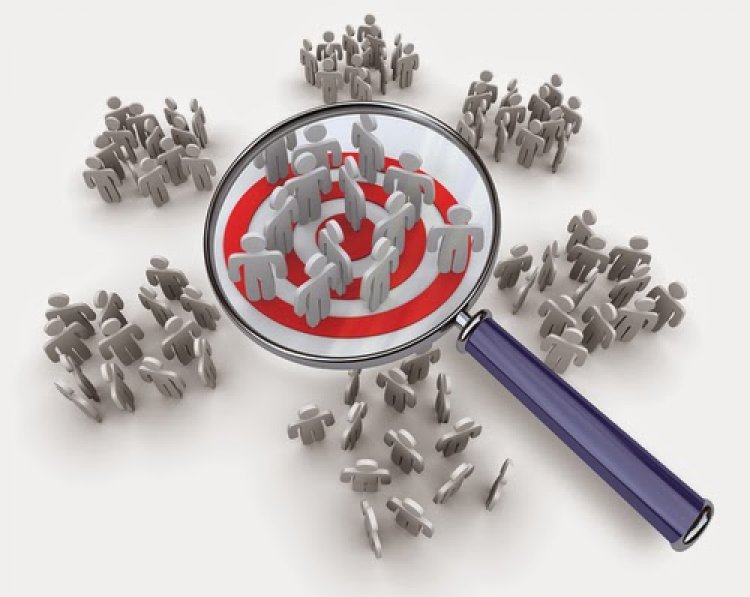It’s 2017. Have you found your ‘tribe’ yet?
Andy Coville, CEO, Brodeur Partners

We all know that good CEOs think about the customer. Great ones obsess.
As technology changes everything, constantly, leaders devour information on customers’ needs, wants, demographics and purchasing journeys. They continuously align marketing, advertising and sales with carefully conceived personas of customer targets.
Perhaps there is one more thing we should be thinking about. Tribes. Both in terms of customers and employees.
Author Seth Godin established the term tribes in his 2008 bestseller on leadership, “Tribes: We Need You to Lead Us.” “A tribe,” he wrote, “is a group of people connected to one another, connected to a leader and connected to an idea.... A group needs only two things to be a tribe: a shared interest and a way to communicate.”
Tribes may just be the most overlooked and underappreciated lens for understanding, reaching and converting new customers – and making existing customers more loyal.
Why do veterans buy one car brand over another? Why do rock climbers all seem to drink the same beverage brand? Why do fashionistas tend to choose the same types of restaurants? Tribes.
We’ve been interested in tribes and the impact on communications for some time. Our company recently did a survey of more than 1,000 Americans in late 2016. It is part of our ongoing research around Relevance. Our study examines 70 brands, five industries, six social networks and 1,020 American consumers surveyed online.
Among the findings:
- Shared experiences – more than interests, geographies or professions – spur the formation of modern-day communities, or tribes.
- Some of the strongest interpersonal relationships we have form around food, politics, the arts, faith, health, fitness, sports, fashion and money.
- Brands attract tribes, and tribes find brands. Some brands, however, transcend tribes.
- More likely to cluster in tribes, millennials are more optimistic than older generations. For example, they are more likely to predict improvement in the economy, environment, education, health care, discrimination and terrorism.
- Social networks play a huge role in tribal relationships, and different networks serve different demographics.
- The strongest tribes (excluding immediate family) are those based in experiences such as military or volunteer service.
- There are gender and ethnic nuances in tribes’ interests and social network use.
Anxious times
Tribes have existed since pre-history. But in a contemporary commercial context, they have a particular function. They give us comfort and help us connect.
Consumers yearn for comfort wherever they can get it in anxious times like these. According to Marketplace’s Economic Anxiety Index, more people were losing sleep over their financial situation in 2016 than in 2015; people had less confidence they could find a new job within six months if they needed to; and seven in 10 Americans thought the U.S. economic system was “rigged” in favor of certain groups.
People yearn to connect not only with new friends, but with a limited number of brands and products that are truly relevant to them. In a noisy world offering too many choices, a brand can become relevant by making deep, genuine appeals to consumers’ sensory, social, rational and ethical natures. In essence, as consumers connect to your brand, they’re connecting with peers through it. Think of how hottest clothing labels sweep through high school and college campuses. Again, tribes.
Social’s role
Like nearly everything else in the 21st century, social media has accelerated tribe formation. It provides Godin’s second criterion, “a way to communicate.” On steroids.
Not surprisingly, Facebook, the king of social networks, has emerged as the king of tribe formation. More than four in five respondents to our survey said the relationships they are making through Facebook are growing in importance in their lives. Instagram, however, is ascending in importance, showing significant relevance for women, millennials (18-34) and Gen Xers (35-54). For example, 45 percent of millennial respondents said the people they met and the relationships they were forming through Instagram were becoming more important in their life.
Tribal dynamics get more complex when you look into individual brands and their appeal. For example, we found that:
- Fans of Coca-Cola are 17 percent more likely than the average consumer to have friends who share their tastes in fashion, and are 14 percent more likely to value friendships made through an artistic activity or group.
- Under Armour fans are 17 percent more likely than the average consumer to have friends who share their preferences on personal finance, and 23 percent more likely to value friendships made through athletics.
- Costco fans are 14 percent more likely than the average consumer to have friends who share their preferences on politics, and 16 percent more likely to value friendships made through volunteering.
Other brands we looked at include Walmart, Target, General Mills, Kraft and Nike. Each contributes unique DNA to its tribe.
Takeaways
So what are the implications for CEOs? Here are five ways CEOs can help their companies capitalize on tribes in 2017:
- Identify – by conversations, focus groups or surveys – the shared experiences and shared interests of your brand champions.
- Monitor social channels for evidence of experiences occurring among your customers and relationships growing out of these experiences.
- Create events, conferences, adventures, social campaigns and other experiences that can grow and galvanize customer relationships.
- Have your team look for opportunities in “tribal adjacencies” – other shared-experience and shared-interest groups that align both with the brand and with current brand champions.
- Reconfigure segmentation and targeting strategy around shared experience and interests.
Best of luck finding your tribes. Good CEOs will think about them; great ones will lead them.
About the Author
Andy Coville is the CEO of Brodeur Partners, a strategic communications company, and author of “Relevance: The Power to Change Minds and Behavior and Stay Ahead of the Competition.”

















